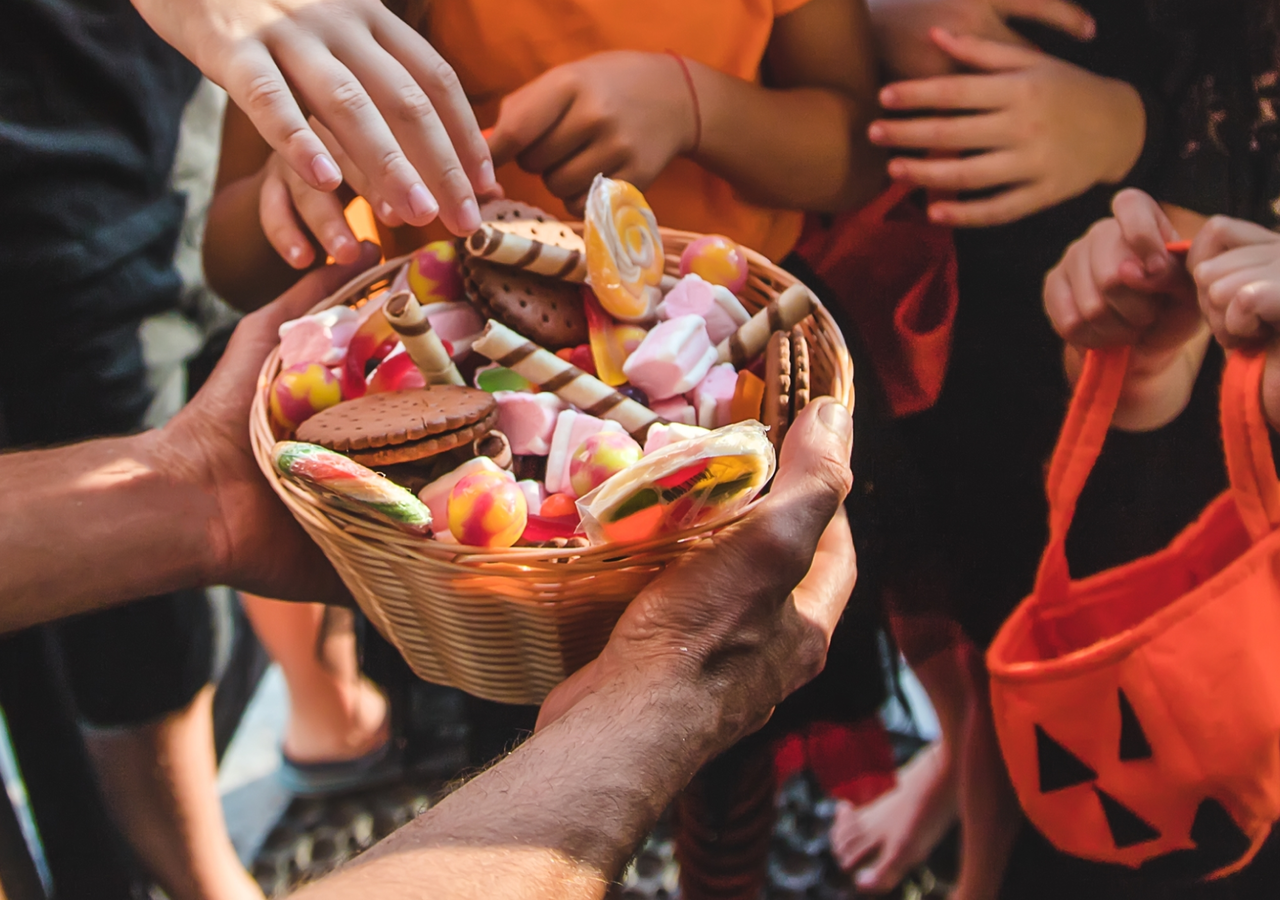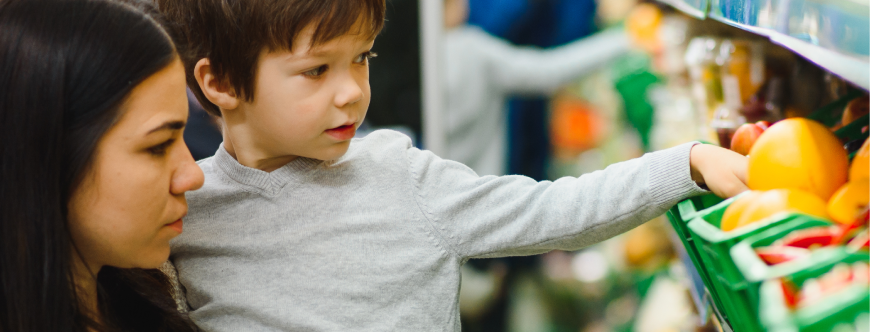A family psychologist’s guide to navigating halloween sugar - before and after the big day
Written by: Alba Health team
Last updated: 2025-10-30

Summary
Halloween can be magical for kids, but stressful for parents trying to strike a balance around sugar. Family Psychologist and Nutritionist Dr. Colette Reynolds shares her step-by-step approach to help families enjoy the fun while keeping routines, gut health, and balanced food habits intact. With a calm, practical mindset, you can turn Halloween into a learning moment that supports your child’s long-term relationship with food.
In this article
How to prepare with routine and neutral food language
Ways to make Halloween about more than just sugar
What and when to feed your child on the big day
How to create a calm plan for managing the candy haul
Helping kids tune into hunger and fullness cues
Encouraging long-term balance and food confidence
Summary
Halloween can be exciting for kids – but also a challenge for parents trying to maintain balance around sugar. Instead of focusing on restriction, the goal is to help children enjoy the celebration without it taking over their gut health, mood, or food habits in the days that follow.
As a parent, it’s natural to worry about the mountain of candy and the potential for tummy aches or sugar-fueled meltdowns. The key is to have a calm, practical approach that empowers your child.
With insights from Dr. Colette Reynolds, a Psychologist and Family Nutritionist, here’s a step-by-step guide to prepare before Halloween and how to reset afterward. This is educational content, not medical advice.
1. Prepare with routine and neutral language
The best preparation for Halloween is to maintain your regular eating routines as much as possible before and after the night itself. This means prioritizing three main meals: daily-breakfast, lunch, and dinner. This structure helps keep things predictable and stable.
This is also a good time to talk about food in a neutral way. Dr. Reynolds suggests avoiding labels like "bad," "full of sugar," or "empty calories." Labeling foods can make children feel guilty for eating them. Likewise, making sweets seem forbidden or overly restricted can increase their appeal.
One concrete example: Introduce the term "growing foods." Dr. Reynolds likes this term because it frames food around its function. You can say: "These are 'growing foods' – like chicken and broccoli – that help you grow strong and give you fuel for playing soccer. We eat these foods most often. Sweets are nice to eat, but they don't have the same superpowers, so we eat them less often."
2. Focus on the whole experience (not just sugar)
It's helpful to think about Halloween in a more holistic way. The celebration is not just about the haul of sweets. It’s also about dressing up, playing games, and enjoying spooky-themed activities.
Lean into the other parts of the fun. You can play traditional games like apple bobbing, make food look "scary" (like "mummy" hot dogs or clementine "pumpkins"), or focus on the excitement of walking around the neighborhood with friends.
One concrete example: Before the day, ask your child what they are most looking forward to. "Are you excited to show your friends your costume?" or "Which game should we play at our party?" This shifts the primary focus from candy to the full experience of the celebration.


3. Fuel up on halloween day
On the day itself, stick to the usual eating routine as much as you can. Ensure your children eat well during the day, ideally two or three balanced meals containing protein and fiber. These nutrients help stabilize blood sugar levels and provide lasting energy, which can reduce the feeling of needing to eat every sweet in sight.
Make sure children have something substantial to eat before they go trick-or-treating. Dr. Reynolds clarifies that we don't want them to be full, as that might teach them it's okay to eat on a full stomach. But we also don't want them to be very hungry.
One concrete example: Instead of a late evening meal, try an early, substantial snack before the festivities begin. This could be a small bowl of chili, a cheese and cracker plate with some fruit, or a yogurt with berries.
4. Create a clear plan for the candy haul
One of the most effective strategies is to tell your children what the plan is for handling the candy after Halloween night. When kids feel secure and know exactly when they can have more, it can reduce feelings of deprivation. This clarity may make it easier for them to stop eating when it's time, as they trust that the opportunity will come again.
You also don't have to treat all sweets equally. Dr. Reynolds suggests letting children pick their absolute favourites. Some kids may prefer lollies, others chocolate, and some might just like the Halloween-themed wrappers.
One concrete example: Sit down with your child the day after Halloween. Say: "Wow, you got a lot of treats! Let's pick out your top 10 favourites. Our plan is to have one of these items each day with your lunch until they're gone. We'll put the rest away for now."
5. Listen to fullness cues (and learn from them)
Use the Halloween haul as a chance to talk about hunger and fullness. Dr. Reynolds likes the idea that "we don't eat food just because it's there," like at a buffet. Ideally, it's best to eat when we’re hungry and stop when we’re full.
You can remind children that eating past being full can lead to a sore tummy or even feeling sick. We don't want to encourage this, but if it happens, it can be a valuable long-term lesson.
One concrete example: If your child eats too much and feels unwell, avoid "I told you so." Instead, be empathetic: "I'm sorry your tummy hurts. It feels awful when we eat more than our body needs. Next time, maybe we can try stopping when your tummy feels 'just right' so you can keep playing."
6. Keep a long-term perspective
Dr. Reynolds wishes every parent knew that what’s really important is what happens the rest of the time. Halloween is a short-term challenge. The goal is to help children develop a long-term, balanced relationship with all foods, including sweets. This process means over-indulging at times – for all of us, not just our children-and then getting back to our normal routines.
You can also give your child more control over when they eat their planned treat, which builds agency.
One concrete example: Offer a simple choice: "The plan is one treat today. Do you want to have it with your afternoon snack, or later after dinner?" Dr. Reynolds notes that it's best to avoid using sweets as a reward (e.g., "if you eat your dinner") or as a punishment (e.g., "you didn't eat, so no sweets"). This helps keep food and emotions separate.
Summary
- Maintain routines: Stick to three main meals (breakfast, lunch, dinner) before and after Halloween to provide stability.
- Use neutral language: Focus on "growing foods" for fuel and avoid labeling sweets as "bad" or "forbidden" to prevent guilt.
- Fuel up first: On Halloween, provide balanced meals with protein and fiber, including a substantial snack before trick-or-treating.
- Make a clear plan: Tell your child the plan for the candy haul (e.g., "one a day with lunch") so they feel secure.
- Listen to body cues: Encourage kids to eat when hungry and stop when full, using a tummy ache as a learning moment if it happens.
- Give control, not bribes: Let them choose when to eat their treat, but avoid using sweets as a reward or punishment.
- Think long-term: Focus on building a healthy, balanced relationship with food year-round, not on being perfect for one night.
Curious about your child’s gut health?
Discover your child’s gut health with Alba’s pioneering test – and get expert, personalized guidance from a certified Nutrition & Health Coach to help it thrive.
Get started

